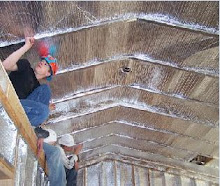
Author: Diya Kapoor
High heating bills can be a thing of past if you take these 3 home insulation steps. Home insulation installs capability to control heat movement by sealing gaps that are catalyst to air leakage and heat leakage. You may not be aware but there are several holes or gaps such as cavities in walls, gaps in attic, keyholes, spaces around doors and windows, floors which is responsible for fluctuation of temperature. For this reason, you need to produce carbon dioxide based heat to interior climate warm. But, this is necessary when your house is not insulated or inadequately insulated. Hence, once you adopt proper insulation strategies your building will reduce requirement for CO2 based heat, heating use and utility bills cause by electricity consumption for heating use. Here are three effective home insulation strategies to lessen energy bills this winter:
1. Insulate your attic – The attic is a major source for loss of heat and also one of the most convenient areas to get in and access. Your attic must have minimum 12 inches or 250mm of insulation as per current recommendation. One can install paperless rolls of home insulation coating on top of existing insulation made up of either cellulose or vermiculate. These kinds of insulation materials have tendency to "compact" over time, mitigating their efficiency of insulation. When you notice that icicles formed on the eaves of roof area it proves that warm air in the area is melting snow making water runoff to re-freeze. This means, your attic needs to be insulated until the air is felt very cold there.
2. Apply weather-stripping around windows and doors – Substantial amount of heat can be lost via spaces and holes around doors and windows area. Recent weather-stripping home insulation materials are sold at lower rates but have shown good results in minimizing loss of warmth and money is warming outside air. These materials are not difficult to install so that you can ‘do it yourself’ quite easily. You only need to assure temperature level must be above 20 degrees Fahrenheit. To maximise efficacy of these insulation materials for a prolonged period, make sure the area is dry and clean.
3. Select expansion foam to insulate small spaces – Expansion foam based home insulation materials have shown utmost benefits when fitted in small gaps or openings letting hot air outside. These areas can be small openings that allow plumbing pipes enters into house, little spaces beneath electric switch plates, gaps created for running cable, internet and electricity connection lines. Since, these small spaces in total radiate great quantity of heat to escape from house, therefore, filling these spaces with home insulation will save a lot of money and energy resources. You should not also ignore your basement areas from the list of areas should receive home insulation measures as crawlspaces and home basements comprise numerous small openings allow heat leakage. Recycled paper based home insulation materials work the best for filling up these gaps.
Article Source: http://www.articlesbase.com/home-improvement-articles/home-insulation-turn-your-house-environment-friendly-in-just-3-steps-1026837.html
About the Author:
An article author Diya Kapoor is providing information about home insulation and cavity wall insulation . Home insulation grants are now available to insulate your homes. I have also taken insulation grants for my home and really enjoying it.




